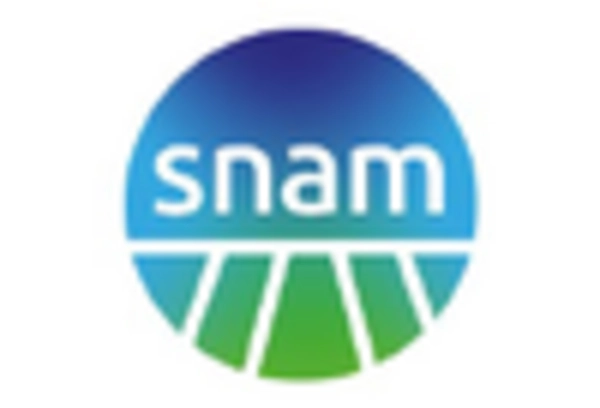Rising Energy Prices
The Bio LNG Market is also influenced by the rising prices of conventional energy sources. As fossil fuel prices continue to fluctuate, businesses and consumers are seeking more stable and sustainable energy alternatives. Bio LNG Market, derived from organic waste, offers a cost-effective solution that can mitigate the impact of volatile energy prices. According to recent data, the price of bio LNG has shown resilience compared to traditional natural gas, making it an attractive option for energy procurement. This trend is likely to encourage further investment in bio LNG production facilities, thereby enhancing the overall growth of the Bio LNG Market.
Increasing Environmental Regulations
The Bio LNG Market is experiencing a surge in demand due to increasing environmental regulations aimed at reducing greenhouse gas emissions. Governments worldwide are implementing stricter policies to combat climate change, which encourages the adoption of cleaner fuels like bio LNG. For instance, the European Union has set ambitious targets for reducing carbon emissions, which has led to a significant rise in bio LNG production and consumption. This regulatory environment not only promotes the use of bio LNG but also incentivizes investments in related technologies and infrastructure. As a result, companies are increasingly focusing on bio LNG as a viable alternative to fossil fuels, thereby driving growth in the Bio LNG Market.
Technological Innovations in Production
Technological advancements play a crucial role in the Bio LNG Market, as innovations in production processes enhance efficiency and reduce costs. Recent developments in anaerobic digestion and gasification technologies have improved the yield of bio LNG from organic materials. These innovations not only increase the viability of bio LNG as a competitive energy source but also expand the range of feedstocks that can be utilized. As production technologies continue to evolve, the Bio LNG Market is expected to witness a significant increase in output, making bio LNG more accessible and appealing to a broader audience.
Growing Awareness of Sustainable Practices
There is a notable increase in awareness regarding sustainable practices among consumers and businesses, which is positively impacting the Bio LNG Market. As environmental concerns become more prevalent, stakeholders are actively seeking sustainable energy solutions. Bio LNG Market, being a renewable energy source, aligns with the values of eco-conscious consumers and organizations. This shift in mindset is driving demand for bio LNG as companies aim to enhance their sustainability profiles. Furthermore, many corporations are setting ambitious sustainability goals, which often include transitioning to renewable energy sources like bio LNG, thereby propelling the growth of the Bio LNG Market.
Investment in Renewable Energy Infrastructure
Investment in renewable energy infrastructure is a key driver for the Bio LNG Market. Governments and private entities are increasingly allocating funds to develop facilities that support the production and distribution of bio LNG. This investment is crucial for establishing a robust supply chain that can meet the rising demand for renewable energy. For example, several countries have initiated projects to build bio LNG production plants and distribution networks, which are expected to enhance market accessibility. As infrastructure continues to expand, the Bio LNG Market is likely to experience accelerated growth, providing a reliable energy source for various applications.



















Leave a Comment